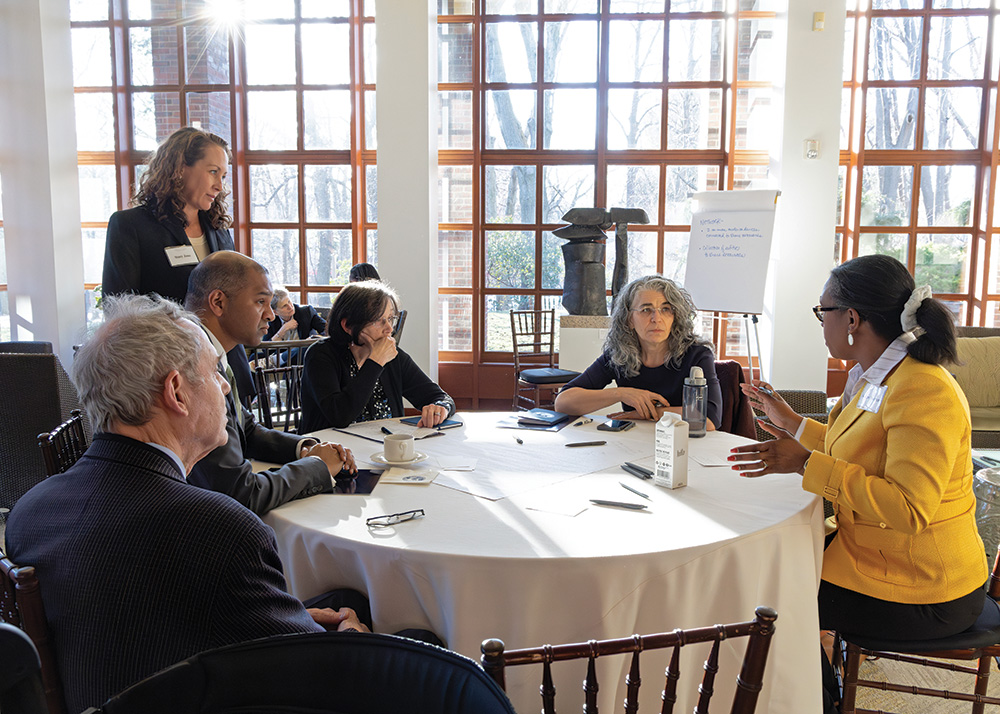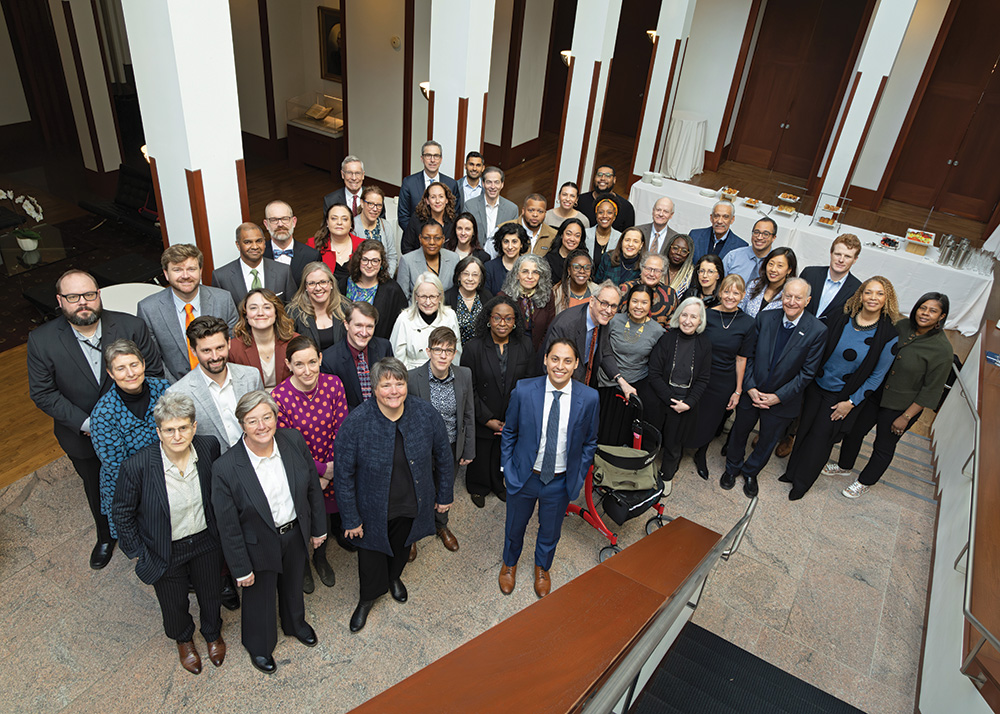By Eduardo Gonzalez, Program Officer for American Institutions, Society, and the Public Good, and Betsy Super, Program Director for American Institutions, Society, and the Public Good
In a single year, 55 million Americans might face 260 million legal problems, such as fighting eviction threats from landlords, dealing with overwhelming medical bills from an unexpected illness that could lead to bankruptcy, or seeking assistance to escape abusive domestic situations. Yet only some Americans recognize that these problems are matters of civil justice. And even fewer have access to available, affordable, and quality legal support needed to resolve these problems. This is the civil justice gap: the disparity between the legal needs of Americans and the resources available to meet those needs.
For the past ten years, the Academy’s Making Justice Accessible project has worked to understand, measure, and highlight innovative solutions to the civil justice gap. In March 2024, over sixty leaders in law, health care, philanthropy, corporate social responsibility, nonprofit organizations, and advocacy met at the House of the Academy to reimagine the delivery of legal assistance. The Summit was the capstone event for the Expanding Access to Justice initiative, the final phase of the Making Justice Accessible project.
The sessions and workshops at the Summit showcased innovative models, projects, and developments that are making significant strides in addressing the civil justice gap. The convening deepened understanding of how civil justice efforts intersect with broader public interest endeavors, including in civics, arts, humanities, housing, criminal justice, and corporate social responsibility.
In his opening remarks, project cochair John Levi (Legal Services Corporation; Sidley Austin LLP) emphasized the urgent need to address the civil justice gap in the United States, described progress made over the past decade, and underscored the value of interdisciplinary collaboration to reimagine and improve the civil justice system. He called for ongoing coordination of national efforts to ensure equal access to justice for all Americans.
The first session featured a discussion on people-centered justice in the civil legal system to illuminate what it means to experience legal problems in the United States. Moderated by Advisory Committee member Rebecca Sandefur (Arizona State University), the panelists discussed insights on practices and approaches that empower individuals and communities to better understand and resolve their justice issues. The examples highlighted during the session included innovative people-centered strategies in settings from rural Alaska to North Carolina and even internationally. Panelists explained how initiatives can bring in professionals beyond lawyers—that is, people already in communities trained and authorized to provide specific legal support.
The second session highlighted the critical role of civil justice networks in fostering innovation, promoting best practices, and driving systemic change within the civil justice sector. Panelists discussed the importance of strategic investments and collaborative efforts in building and sustaining these networks, which serve as foundational pillars for advancing justice solutions at national, state, and local levels.
One of the challenges to improve access to civil justice systematically is navigating diverse state and federal court procedures and forms. With each of the fifty-six state and state equivalents having its own set of rules, and often individual courts within states adopting unique approaches, developing scalable solutions is difficult. The Summit’s third panel explored ways technology can help address these and other challenges that impede broad-scale improvements. Panelists elaborated on emerging trends, new tools, and initiatives designed to bridge justice gaps and improve access to legal assistance through simplification and technology. Discussions centered on leveraging technology like generative AI, improving data collection and analysis, and implementing user-centered service models to create more responsive and equitable civil justice systems.
But technology cannot solve all problems, especially when they might be framed not as problems of law but as problems of health, housing, or more complex social issues. To close out the first day, Bethany Hamilton, Co-Director of the National Center for Medical-Legal Partnerships, delivered a keynote lecture, followed by a conversation with Keegan Warren, Executive Director of the Texas A&M University Institute for Healthcare Access. Hamilton emphasized the transformative potential of Medical-Legal Partnerships (MLPs) in addressing health disparities and promoting social justice. The conversation between Hamilton and Warren highlighted practical strategies and pathways for advancing the MLP movement and fostering collaboration between health care and legal professionals.
At the closing plenary, Allie Yang-Green, Executive Director of the Legal Aid Interagency Roundtable at the Department of Justice (DOJ), outlined the steps DOJ is taking to address the civil justice gap. She emphasized the resources, and need, for cross-field partnerships, including resources to simplify the search for federal funding for legal aid, resources to support language access, and reports on the use of nonlawyer assistance and other strategies.
The last session explored how philanthropic and corporate initiatives can advance justice by leveraging resources, fostering policy reform, and improving internal practices. Panelists shared key outcomes from justice programs in workforce development, health equity initiatives, and community well-being. They reflected on common factors driving their impact and discussed ways to foster collaboration between public and private sectors, and that cut across criminal and civil matters.
Throughout the program, the participants actively engaged in session topics across three workshops, which were led by legal design experts from some of the nation’s legal innovation hubs focused on civil justice issues. Margaret Hagan (Stanford Legal Design Lab, Stanford University), Stacy Jane (Innovation for Justice, The University of Arizona College of Law and The University of Utah School of Business), Dan Jackson (NuLawLab, Northeastern University School of Law), and David Colarusso (Suffolk Legal Innovation & Technology Lab, Suffolk University Law School) moderated group discussions that fostered discourse about the connections between civil justice and other public good sectors and encouraged participants to surface new thinking and deeper connections.
In her closing remarks, project cochair Martha Minow (Harvard Law School) summarized key themes from the Summit: the power of common narratives and language to bring diverse fields together; that people should be empowered to know, use, and shape the law; and the role of technology as a catalyst for transformative change.
In the fall, the Academy will release a new national strategy roadmap that will outline how promising developments in the civil justice field can be further supported, scaled, and sustained to ensure equal access to justice for all Americans.
To learn more about the Making Justice Accessible project, please visit the Academy’s website.

